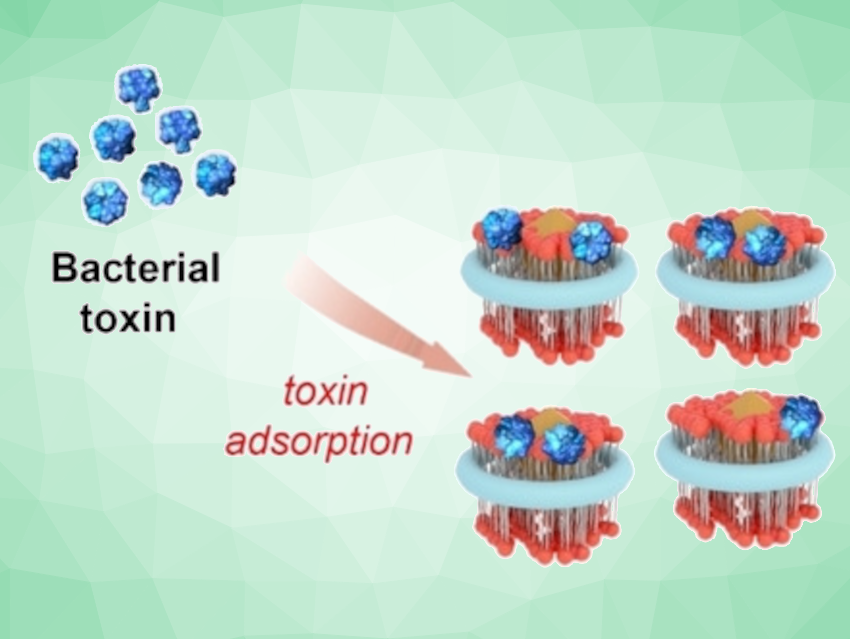Tiny, disc-shaped pieces of membrane called nanodiscs offer exciting possibilities for nanomedicine. They have previously been mostly made of synthetic lipids and proteins. Weiwei Gao, Liangfang Zhang, University of California San Diego, La Jolla, USA, and colleagues have introduced nanodiscs based on the cell membranes of human red blood cells, which can neutralize dangerous bacterial toxins.
Disc-Shaped Lipid Bilayer Assemblies
Nanodiscs are disc-shaped lipid bilayers with diameters mostly under 20 nm. They are surrounded and stabilized by scaffolds made of proteins, peptides, or synthetic polymers. Because of their disc shape, they are significantly less likely than their spherical counterparts to be “swallowed” and destroyed by immune cells. They are, thus, attractive for applications like targeted drug transport. Their small size and disc shape allow nanodiscs to effectively enter lymph nodes, making them potentially useful as nanovaccines.
Previous nanodiscs have primarily been based on synthetic lipid bilayers whose lipid compositions must be carefully—and laboriously—optimized for specific applications. In addition, synthetic lipids can trigger undesirable immune reactions.
Formulation with Red Blood Cell Membranes
The team uses natural cell membranes as starting materials for nanodiscs. Natural membranes contain native lipids and proteins whose biological functions are maintained in the nanodiscs, which could be therapeutically useful. The team demonstrated their concept with membranes from red blood cells.
Red blood cells were made to burst, and their membranes were separated out and mixed with a copolymer of styrene and maleic acid. This resulted in the formation of nanodiscs (NDs) consisting of the natural membrane lipids and proteins from the red blood cells (RBCs) and stabilized by the copolymer. Called RBC-NDs, these tiny structures can be stored for long periods and are both biocompatible and non-toxic.
Bacterial Toxin Neutralization
Interestingly, these RBC-NDs are capable of effectively neutralizing certain bacterial toxins, as demonstrated in tests with α-toxin from a strain of methicillin-resistant Staphylococcus aureus.
S. aureus is found almost everywhere and is usually harmless. However, in immunocompromised patients, open wounds, or after operations, for example, it can spread and cause life-threatening lung infections, toxic shock, and sepsis. Strains that are resistant to antibiotics are particularly dangerous. The primary toxin from these bacteria, α-toxin, destroys blood cells (hemolysis). In vitro, RBC-NDs can bind α-toxin and neutralize its hemolysis and cytotoxicity. In vivo, injection of RBC-NDs significantly improved the chances of survival in mice that had been given α-toxin or a complex mixture of the various proteins excreted by S. aureus.
The design strategy used for the RBC-NDs could also be extended to other types of membranes for a wide range of applications.
- Synthesis of Erythrocyte Nanodiscs for Bacterial Toxin Neutralization,
Lei Sun, Dan Wang, Ilkoo Noh, Ronnie H. Fang, Weiwei Gao, Liangfang Zhang,
Angew. Chem. Int. Ed. 2023.
https://doi.org/10.1002/anie.202301566




